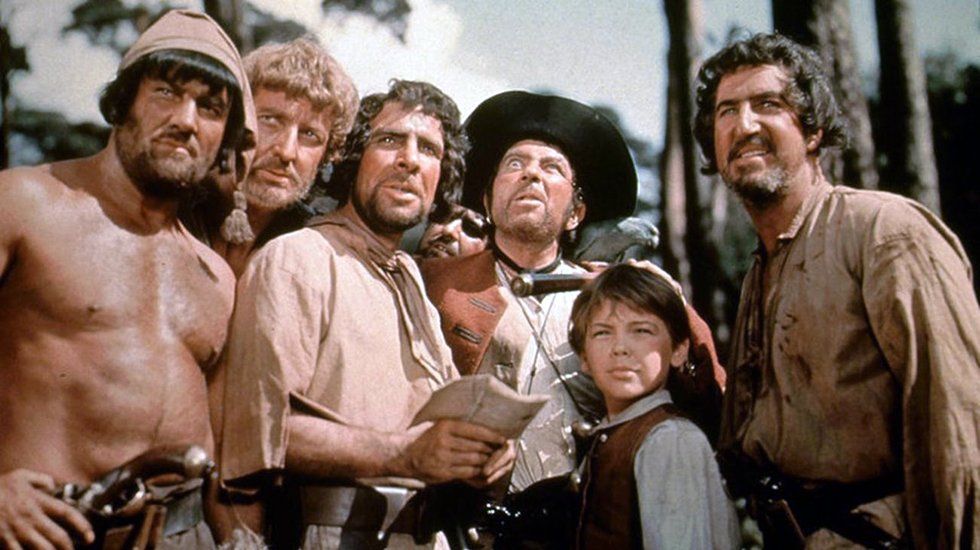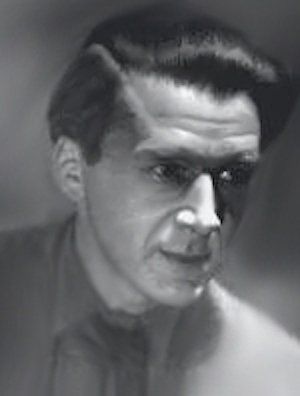Edward John Clifton Parker was born on 5 February 1905 in London, the youngest son of a bank manager. He was encouraged by his father to go into commerce but studied music privately and composed his first published work, Romance for violin and piano, when aged sixteen. In 1924, he decided to divide his names—to use 'Edward John' for lighter compositions and 'Clifton Parker' for more serious compositions. However, he never used the former. He obtained an ARCM diploma in piano teaching at the Royal Academy of Music in 1926 and abandoned his career in commerce and became a music copyist. By the mid 1930s he was achieving success with some of his classical pieces and managed to get his work accepted for broadcast on the BBC, work such as In a Twilight Dim with Rose. He came to the attention of Muir Mathieson, one of the music pioneers of the British film industry. His early film compositions were uncredited, including the 1942 Noël Coward film IN WHICH WE SERVE and it was only with his 1944 score for WESTERN APPROACHES that his name finally attracted attention. The 1950s were a prolific period, with Parker composing for many mediums, especially film. However, in 1963 he was one of three composers, the others being William Alwyn and Franz Reizenstein, who abandoned scoring film music in protest of the exorbitant percentage of royalties taken by the publishers. Parker was married twice. His second wife, Yoma Sasburg, was principal dancer in a number of his ballet productions. He was the father of Julia Clifton Parker, better known as writer Julia Stoneham. He was inactive for the final 13 years of his life owing to ulcers and emphysema, and he died on 2 September 1989, aged 84, in Marlow. © Chandos Records
Treasure Island

The music for TREASURE ISLAND, produced by Walt Disney at Denham Studios, England, may be divided into two sections. First came the question of sea shanties, to be sung in the film. Under the general supervision of Muir Mathieson, (music director to the production) Mrs. Buck, his personal assistant, conducted a research during which over three hundred sea shanties and old maritime songs were examined before a final selection was submitted to the production chief, Perce Pearce. It was essential that the songs chosen should not only be correct for the period (1765) but also that they should be suitable in lilt and tempo to the scenes involved. Walt Disney himself heard a number of test recordings before the final selection was made.
The first of the shanties, “Johnny, Come Down to Hilo” will be heard sung to the accompaniment of a guitar, while “Tom's Gone Down to Hilo” has been recorded by a solo voice, accompanied by a group of pirates humming, and a guitar. The third sea song to be heard in TREASURE ISLAND is not a traditional number as such, but was specially set by Marcus Dods, of Cambridge University; it is the old number Yo-Ho-Ho, and a Bottle of Rum.
The second aspect of the music was looked after by the composer of the main musical score, Clifton Parker. This young English writer has been associated with a large number of films and by a strange coincidence, many of them have been about the sea or adventure stories in which the sea played a large part. One of his first successes was the music for WESTERN APPROACHES, the story of a dozen shipwrecked Merchant Seamen adrift in an open boat in mid-Atlantic during the war. There was JOHNNY FRENCHMAN, which dealt with two rival groups of fisherfolk on either side of the English Channel. Many will remember Clifton Parker's music for THE BLUE LAGOON, with Jean Simmons on a tropical island. Of course, not all his scores have been about the sea. For example, there wasn't a drop of water for miles in BLANCHE FURY (except during the fire sequence!), CHILDREN ON TRIAL or WHEN THE BOUGH BREAKS.
Clifton Parker is a composer whose views on film music are well-defined. “A composer faces two main problems in films,” he will tell you. "Firstly there are moments when he is allowed to have his say, not as in a symphony but rather as in opera or ballet, where the eye and the ear must be equally intrigued. Secondly, there are the sections when the sound track must be divided into its three main ingredients - dialogue, sound effects and music. Here the composer must arrange that the music calls for no strong line of its own, but rather the qualities that make it flow smoothly into the general pattern of the sound track. As we are working in the age of sound film, although our eyes are on the screen, our ears are on the sound track. When the composer has it all his own way, he can command half our attention. When he hasn’t, then he's lucky if he has one-tenth.”
“TREASURE ISLAND has proved to be a most interesting task. First of all, there was the little matter of sea shanties. You have heard how one or two are sung in the film. Then came the great point - should they come into the main musical score. In my younger days, I learned quite a lot of them direct from the first mate of one of the old China Tea Clippers. When it came to the final scoring, it was found impossible to use them because they were too recognizably tuneful. They broke through the action and would have claimed too much of the audience's attention.”
However, there is one scene in which the composer was able to include a sea shanty. It comes in the scene where young Jim Hawkins arrives in Bristol for the first time. Everything is new to him: he sees the busy port, the sea, the ships - and then he sees his first sailor walking down the street with a nautical roll, whistling Johnny, Come Down to Hilo. Jim promptly imitates the sailor's walk, and the music follows him closely as an orchestral echo of the sailor's whistle.
There are many interesting musical moments - for example, a wonderful montage in which the Hispaniola sets to sea on the great voyage of adventure, or a furious scene on the beach when the pirates are grovelling in the sand, hunting for the treasure. But perhaps a description of the music for the opening scenes will in itself sum up the detailed approach that the music writer must adopt on a film of this type. The first shots show a deserted cove, silent and still except for the sound of the sea. The music establishes the mood, carrying the sound of the wind appears, and the music makes a transition to a recitative treatment. We see the Smuggler's Inn; Old Captain Bones makes an appearance; there is mystery and drama in the air - but few people will notice the extent to which the mood of the scene has been discreetly launched, not only in the shots themselves, but also in Clifton Parker's music
Film Music Notes: Summer 1950
Publication: Film Music Vol.X / No.1 pp. 16-17
Publisher: New York: National Film Music Council
Copyright © 1950, by the National Film Music Council. All rights reserved.




